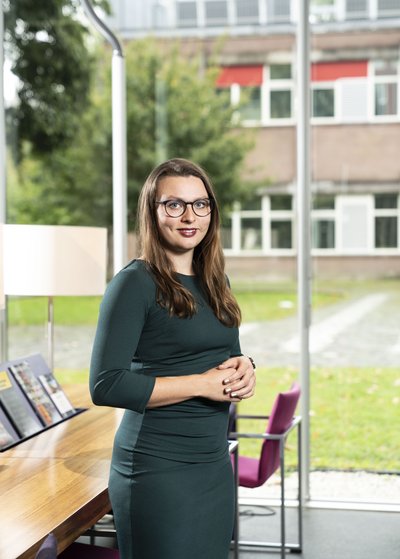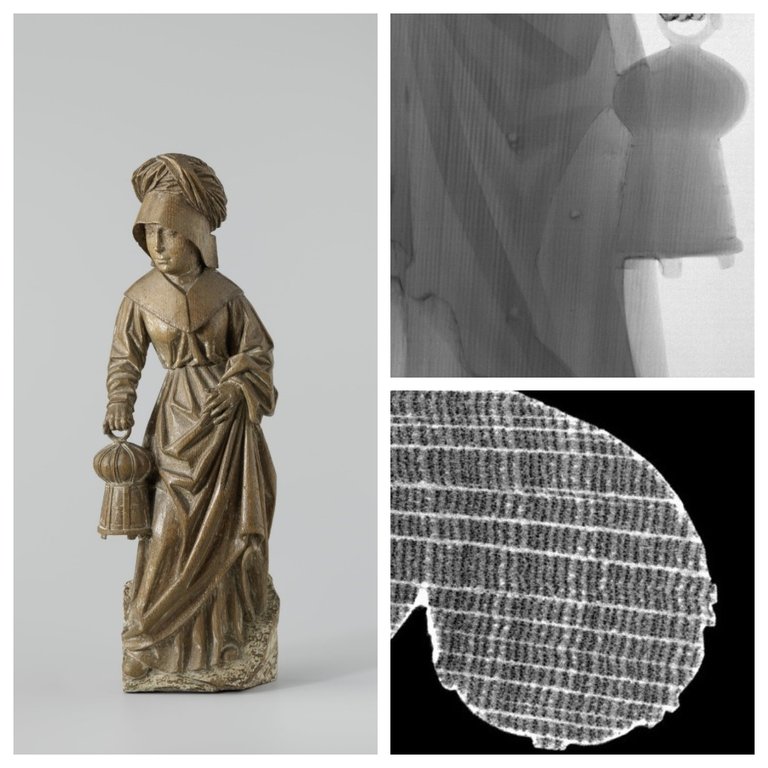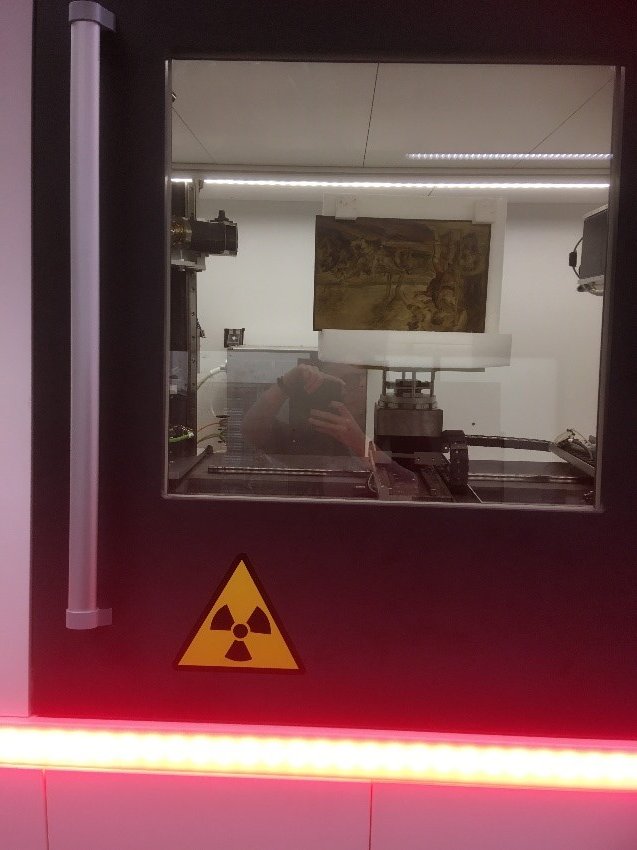The Impact4Art project is a unique collaborative research project between Computed Tomography (CT) imaging scientists from Centrum Wiskunde & Informatica and conservators and researchers from the Rijksmuseum. It is an interdisciplinary project and brings together researchers with different backgrounds and varying research interests. The goals are to tailor the available imaging techniques to the application in cultural heritage research. It involves both the development and application of new methods suited to this purpose, as the scanning of objects itself.
One of these collaborations is with Marta Domínguez-Delmás (University of Amsterdam). She performs dendrochronology: finding out the exact date and provenance of wood by measuring the tree rings. In many wooden cultural heritage objects, the rings are not easily accessible on the surface. For example because they are covered by paint or, as is the case for some panel paintings, by a little frame glued to the edges. Another challenge is to identify the section of the wood where most of the rings can be found, because a higher number of tree rings increases the chance of finding the exact date. Of course, art-historical objects such as panel paintings, sculptures and cabinets cannot be cut or sawn, so we decided to try CT scans to reveal the inner tree-ring sequence of several works of art.

In CT scanning, the X-rays pass through the object and are absorbed depending on the thickness and density of the material. A detector registers the intensity of the X-rays after they passed through the object, creating a ‘shadow’ image on which internal features are visible. In order to know the exact location and shape of these features, images from all sides are combined to create a 3D representation. The object can then be ‘cut’ virtually, allowing the inspection of the interior. This adds a new dimension to the investigation of works of art, facilitating (virtual) access to all parts of the objects being investigated and providing new perspectives. Being able to look through these objects reveals a wealth of useful information that would otherwise have remained inaccessible. Together with Marta, we successfully scanned and dated two wooden art objects. The scanning was executed at CWI’s state-of-the-art FleX-ray Lab.
The first object is a beautiful oak sculpture of a Holy woman with lantern. Most rings were to be found in between the base of the lantern and the edge of the garment of the woman. In Figure 1 the object, an X-ray image and a detail of a slice of the 3D image are shown. The results will be presented in a scientific paper.

Figure 1: Left: The sculpture, Top right: an X-ray image at the height of the lantern. Lower right: a virtual ‘cut’ of the 3D reconstruction at the base of the lantern showing the tree rings.
In collaboration with Prof. Dr. Erma Hermens (Rijksmuseum) we scanned a painting on a wooden panel: Cadmus sowing dragon’s teeth (Figure 2). This scan was part of a project concerning the investigation of two panel paintings depicting the same scene. Access to the tree ring pattern on the surface of the wooden panel was hindered by a small frame that surrounded the painting on all sides. The elongated shape of this panel, thin in one direction, long in the other two directions, presented a challenge to scan it in the limited space within the scanner. It also meant that the X-rays had to penetrate a much longer piece of wood in one direction than in the other. Because of the flexibility of the FleX-ray scanner, high resolution images could be obtained. The surprising results of the scan will be presented in a forthcoming scientific paper.

Figure 2: The painting ‘Cadmus sowing dragon’s teeth’ in the FleX-ray scanner.
A third object scanned recently consisted of a big wooden book chest thought to have served for the scape of Hugo de Groot from his imprisonment at Loevestein Castle in 1621. This project was part of a television series called ‘Historisch Bewijs’ . More details on this project will be published soon on this blog, so please keep an eye out for that!
Francien Bossema, PhD student in the Computational Imaging group at Centrum Wiskunde & Informatica
